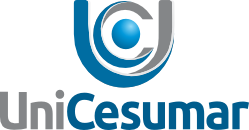DEFAULT: PREVENTION, CONTROL AND DEBT COLLECTION THROUGH CLIENTS´ PROFILE
Keywords:
Default, Credit, Debt collection
Abstract
Boom in the Brazilian economy means an increase in credit demands. According to SERASA, default rate in 2011 was 22% and caused firms to increase their prevention, control and debt collecting methods. When a firm has a good credit policy, the analyst has certain tools that make credit investigation more precise for decision-taking. From the enterprises´ point of view, the most important factor is to avoid defaults due to costs inherent to debt collection. Credit analysis should be based on an analysis of the clients´ profile and traditional debt collection. A descriptive and qualitative research was undertaken by means of documents, interviews and reports on 40 client sheets of the firm Senai in Paranavaí, Brazil, to identify the profile of defaulters and the tools employed. A monthly control of defaults and data on billing and percentages also report the amounts that may be received according to deadlines. The firm calls up clients, sends letters and places them on commerce protection lists besides hiring a debt collecting firm. Although the methods are good, improvements may be adopted in credit analysis and flexibility in debt negotiations which may enhance the credit policy.
Published
2017-03-01
Section
Artigos Originais
A Revista se reserva o direito de efetuar, nos originais, alterações de ordem normativa, ortográfica e gramatical, com o intuito de manter o padrão culto da língua, respeitando, porém, o estilo dos autores. As opiniões emitidas pelos autores são de sua exclusiva responsabilidade.
Os direitos autorais pertencem exclusivamente aos autores. Os direitos de licenciamento utilizado pelo periódico é a licença Creative Commons Attribution Creative Commons Atribuição 4.0 Internacional. São permitidos o compartilhamento (cópia e distribuição do material em qualquer meio ou formato) e adaptação (remixar, transformar, e criar a partir do trabalho, mesmo para fins comerciais), desde que lhe atribuam o devido crédito pela criação original.
Creative Commons Atribuição 4.0 Internacional. São permitidos o compartilhamento (cópia e distribuição do material em qualquer meio ou formato) e adaptação (remixar, transformar, e criar a partir do trabalho, mesmo para fins comerciais), desde que lhe atribuam o devido crédito pela criação original.
Os direitos autorais pertencem exclusivamente aos autores. Os direitos de licenciamento utilizado pelo periódico é a licença Creative Commons Attribution
 Creative Commons Atribuição 4.0 Internacional. São permitidos o compartilhamento (cópia e distribuição do material em qualquer meio ou formato) e adaptação (remixar, transformar, e criar a partir do trabalho, mesmo para fins comerciais), desde que lhe atribuam o devido crédito pela criação original.
Creative Commons Atribuição 4.0 Internacional. São permitidos o compartilhamento (cópia e distribuição do material em qualquer meio ou formato) e adaptação (remixar, transformar, e criar a partir do trabalho, mesmo para fins comerciais), desde que lhe atribuam o devido crédito pela criação original.

